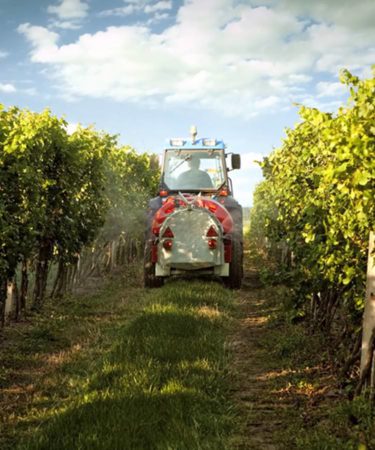A report published yesterday by the U.S. Public Interest Research Group (PIRG) revealed that numerous wine and beer brands contained traces of a “controversial” weed killer ingredient called glyphosate.
News outlets were quick to share the report, with headlines highlighting the importance of the brands involved, and the risks of the chemical their products were found to contain. “Cancer-linked WEED KILLER found in several popular beer and wine brands including Guinness,” ran The Irish Post’s headline.
On the face of it, the Irish Post, and other outlets were just sharing facts — traces of glyphosate had been found in 19 of the 20 brands tested (including Coors Light, Miller Lite, Budweiser, Corona, Heineken, Guinness, Stella Artois, and Samuel Adams). Yet, the insinuation that these brands were in some way putting drinkers at risk, upon closer inspection, turns out to be nothing more than damaging fake news.
“The levels of glyphosate we found are not necessarily dangerous, but are still concerning given the potential health risks,” the U.S. PIRG said in the report. The potential health risks it refers to include the fact that glyphosate — the main ingredient in Monsanto’s “Roundup” weed killer — was found to be a probable carcinogen by the International Agency for Research on Cancer.
But the concentration required to put humans at risk is significantly higher than anything found in this study. The U.S. Environmental Protection Agency (EPA), which regulates the concentration of glyphosate that can remain on or in food, sets the limit for “No Significant Risk” between 0.1 parts per million for foods like coconuts and peanuts, and 400 parts per million for non-grass animal feed.
Of the 20 wines and beers tested in the PIRG study, the drink containing the highest concentration of glyphosate was a 2018 Sutter Home Merlot, which contained just 51.4 parts per billion (ppb) glyphosate. Meanwhile, Tsingtao was the beer with the highest concentration, at 49.7 ppb.
Each value, it’s clear to see, is remarkably lower than the concentration the EPA sets as posing a risk.
“An adult would have to drink more than 140 glasses of wine a day containing the highest glyphosate level measured just to reach the level that California’s Office of Environmental Health Hazard Assessment (OEHHA) has identified as ‘No Significant Risk Level,’” a spokesperson for the Wine Institute wrote to USA TODAY.
William Reeves, a toxicologist for Bayer (which owns Monsanto), added further perspective. “Assuming the greatest value reported, 51.4 ppb, is correct, a 125-pound adult would have to consume 308 gallons of wine per day, every day for life to reach the U.S. Environmental Protection Agency’s glyphosate exposure limit for humans,” he said. That’s the equivalent of “more than a bottle of wine every minute, for life, without sleeping.”
Though Monsanto by no means has a clean ethical slate, this PIRG report is misleading. And the manner in which some news outlets chose to report the findings seems even more irresponsible (especially given that the amount of “contaminated” wine or beer a drinker would need to ingest would long see them dead before the weed killer could do any harm.)
